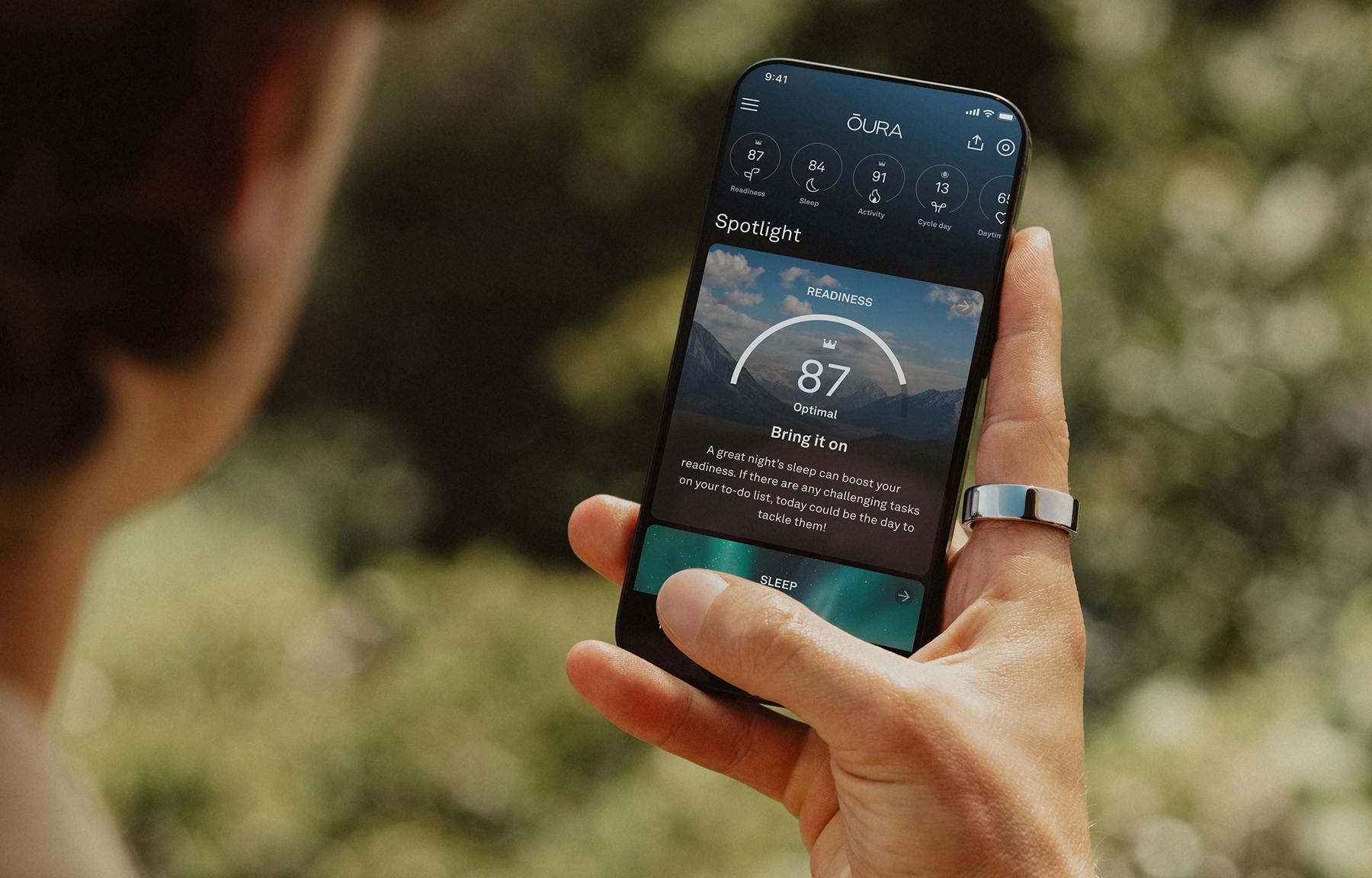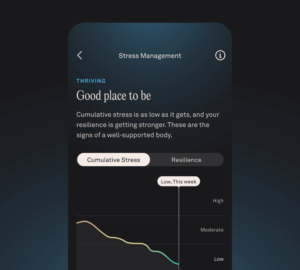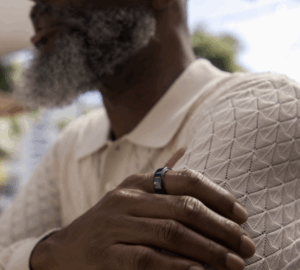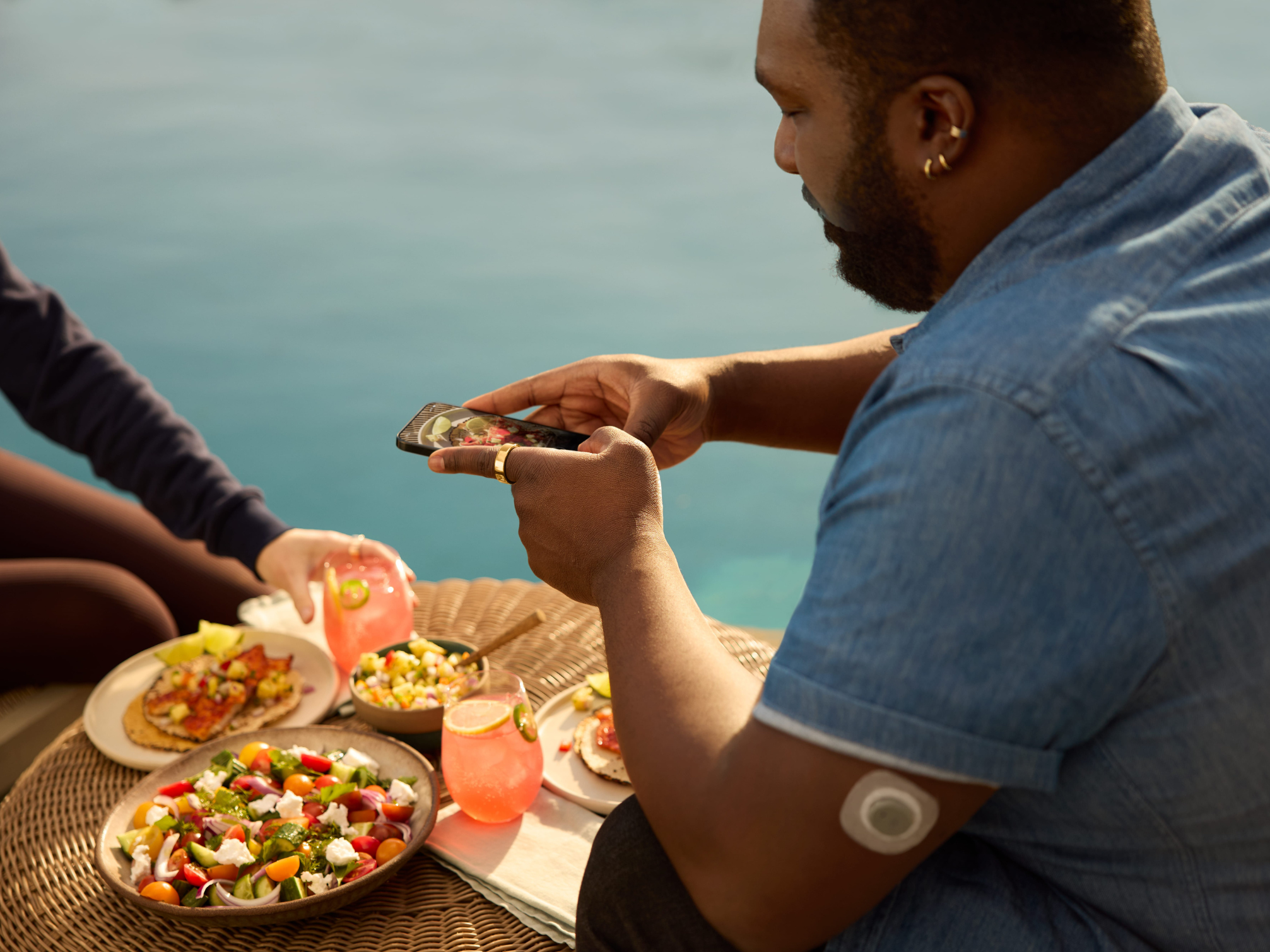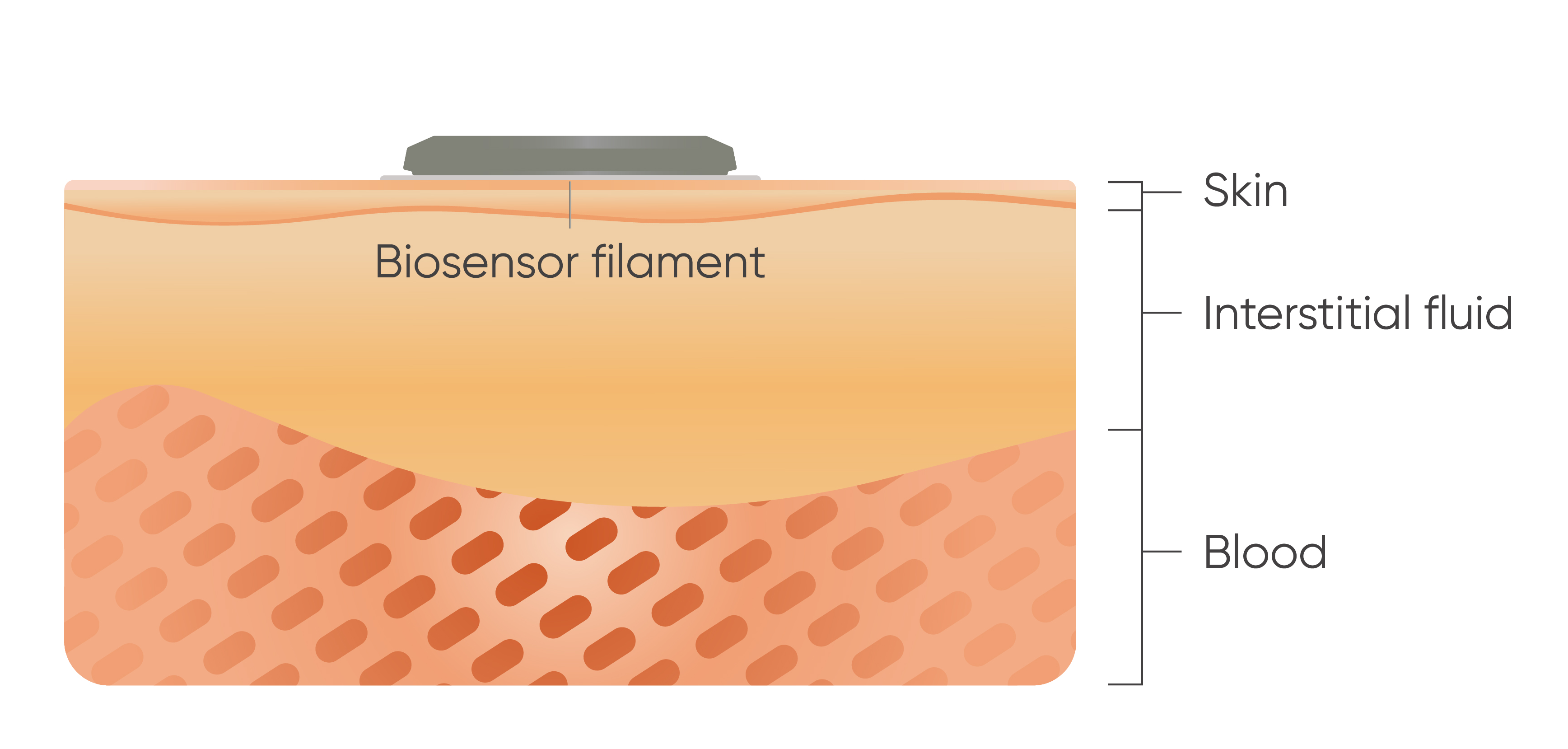Your glucose levels offer a unique snapshot of your overall health.
When you pair the Stelo Glucose Biosensor with the Oura App, you can track your blood glucose and better understand how meals, activity, sleep, and stress impact your glucose—all day and all night.
This feature is currently available to members in the U.S. using the Oura App in English. At this time, Oura does not support other biosensors or continuous glucose monitors, including Dexcom G7 and G6.
What Is the Stelo Glucose Biosensor?
Inserted into the back of the upper arm, the Stelo Glucose Biosensor is a wearable biosensor that tracks glucose levels in near real time using a thin, flexible filament beneath the skin.
Discrete and waterproof, with up to 15 days of wear time, Stelo senses glucose levels every 15 minutes to deliver a clear view of how your glucose levels respond to your daily meals and activities.*
Learn more about connecting Stelo with Oura in the Support Center.
How Does the Stelo Glucose Biosensor Work?
A glucose biosensor provides continuous glucose data throughout that time. It uses an electrochemical signal to measure glucose and communicates the results via Bluetooth.
The filament that sits under your skin is coated with an enzyme called glucose oxidase. When the glucose oxidase enzyme comes into contact with glucose in your interstitial fluid (the fluid surrounding your cells), glucose is converted to gluconic acid and hydrogen peroxide, which generates an electrical signal due to electron transfers that occur as a result of this chemical reaction. This signal communicates the level of glucose molecules in the blood, giving you a reading of your glucose levels.
The sensor transmits glucose levels to your phone so you can see your levels 24/7, and a graph shows how your blood glucose fluctuates throughout the day.
Why Monitoring Glucose Levels Matters
A glucose biosensor helps you move away from a one-size-fits-all approach, allowing you to make sustainable, data-driven health choices tailored to your body’s needs.
There are many factors that affect glucose levels, such as food, sleep, exercise, stress, and medication. Due to these multiple factors, glucose levels are constantly changing during the day. Stelo allows individuals to visualize how these factors affect their glucose.
When you combine Stelo with Oura, our unique approach emphasizes glucose stability, encouraging you to focus on the bigger picture of your glucose levels over time.
The aim of Oura’s Glucose feature is to empower you to understand how your daily habits impact your glucose stability over time—rather than focus on individual spikes in blood glucose, providing a more holistic view that allows you to make the best decisions to support your health.
When you integrate Stelo with Oura, you can:
- See how your daily habits affect glucose levels: By tracking real-time glucose responses, you can pinpoint which lifestyle choices support or disrupt your glucose regulation.
- Optimize your workout routine: For instance, you might discover that your afternoon workout improves insulin sensitivity, keeping your glucose stable after dinner.
- Identify foods that work for your body: You may notice that your morning bowl of oats spikes glucose, leading to mid-morning brain fog and fatigue. This insight allows you to experiment with breakfasts that support stable glucose and sustained energy.
- Find small ways to improve: A glucose biosensor helps you understand one more piece of the metabolic health puzzle and identify areas for improvement in your daily habits.
Tracking Glucose Levels With Oura
Oura empowers you to understand how your daily habits impact your glucose stability over time—rather than focus on individual spikes. Within Oura’s new Glucose experience, you’ll see two key features: Glucose Graph and Time Above Range.
Glucose Graph
The glucose graph shows you how your glucose level fluctuates throughout the day. Logging meals and adding tags can help you better understand these fluctuations and what causes them.
It’s normal for glucose levels to fluctuate according to the time of day and meals. However, sharp spikes followed by rapid drops—often triggered by highly processed foods—can contribute to energy crashes. Ideally, your glucose patterns should resemble gentle rolling hills rather than steep, jagged cliffs.
LEARN MORE: 7 Possible Reasons Your Glucose Is High
Time Above Range
Time Above Range shows how long a meal caused glucose levels to stay above the target range (140+ mg/dL). The assessment window for each meal is two hours from the time it was logged. Note the Time Above Range thresholds are currently designed for people without diabetes.
Since individual spikes are normal and vary due to factors like stress, sleep, and movement, time above range provides a more meaningful long-term view of glucose stability.
- Optimal (0–60 min): Your daily glucose levels have stayed stable without prolonged peaks or drastic drops
- Good (60–90 min): Your daily glucose levels have stayed within the normal range
- Fair (90 min–3 hours): Your daily glucose levels stayed above the normal range for some time
- Elevated (3 hours or longer): Your daily glucose levels have been above the normal range for a bit longer than ideal
Stelo Glucose Biosensor FAQs
Does it hurt to insert?
The sensor, which sits on your skin, is attached to a small filament, which sits just below your skin and is inserted with a needle. It’s a simple and painless process—96% of people reported mild or no pain with sensor insertion.**
Can I use the Stelo Glucose Biosensor even if I don’t have diabetes?
New research supports the use of glucose biosensors for people without diabetes. Studies suggest that glucose monitoring may be beneficial for identifying future risks of glucose intolerance and that people without diabetes experience glucose fluctuations similar to people with prediabetes, which may put them at risk of metabolic issues in the future. Glucose biosensors have emerged as a powerful tool for monitoring and improving your lifestyle for better health.
RELATED: Should You Monitor Your Glucose If You Don’t Have Diabetes?
Does spending time above 140 mg/dL mean my glucose levels are unhealthy?
Not necessarily. It’s totally normal to briefly exceed 140 mg/dL after meals. Frequent or prolonged time above range may indicate lower insulin sensitivity.
Can two identical meals cause different glucose responses?
Yes! Sleep, stress, activity levels, and meal timing all influence glucose responses, meaning the same meal can lead to different outcomes.
What should I do if my Time Above Range is consistently high?
Oura Advisor can help you identify patterns behind your glucose responses. You might start by experimenting with smaller portion sizes, lowering added sugars or refined carbs, shifting meals earlier in the day, or adding light activity after eating. Managing sleep and stress can also make a difference. If high readings persist, consider consulting a healthcare provider for additional support.
Why does my glucose response differ from someone else eating the same food?
Individual differences in insulin sensitivity, gut microbiome, activity, sleep, and stress levels all play a role in glucose metabolism.
Can this feature replace medical glucose monitoring?
No, this feature is for wellness and insights, not for diagnosing or managing medical conditions like diabetes.
*The Stelo biosensor is waterproof and may be submerged under eight feet of water for up to 24 hours without failure when properly installed. If you are in or near water, your smartphone may need to be closer than 20 feet to get readings. If you are in water, you may not get readings until you get out.
**Source: Stelo by Dexcom User Guide
Oura Ring is not a medical device and is not intended to diagnose, treat, cure, monitor, or prevent medical conditions or illnesses. Please do not make any changes to your medication, nutrition, or workouts without first consulting your doctor or another medical professional.





